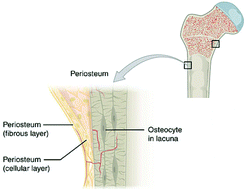Periosteum tissue engineering—a review
Abstract
As always, the clinical therapy of critical size bone defects caused by trauma, tumor removal surgery or congenital malformation is facing great challenges. Currently, various approaches including autograft, allograft and cell–biomaterial composite based tissue-engineering strategies have been implemented to reconstruct injured bone. However, due to damage during the transplantation processes or design negligence of the bionic scaffolds, these methods expose vulnerabilities without the assistance of periosteum, a bilayer membrane on the outer surface of the bone. Periosteum plays a significant role in bone formation and regeneration as a store for progenitor cells, a source of local growth factors and a scaffold to recruit cells and growth factors, and more and more researchers have recognized its great value in tissue engineering application. Besides direct transplantation, periosteum-derived cells can be cultured on various scaffolds for osteogenesis or chondrogenesis application due to their availability. Research studies also provide a biomimetic methodology to synthesize artificial periosteum which mimic native periosteum in structure or function. According to the studies, these tissue-engineered periostea did obviously enhance the therapeutic effects of bone graft and scaffold engineering while they could be directly used as substitutes of native periosteum. Periosteum tissue engineering, whose related research studies have provided new opportunities for the development of bone tissue engineering and therapy, has gradually become a hot spot and there are still lots to consummate. In this review, tissue-engineered periostea were classified into four kinds and discussed, which might help subsequent researchers get a more systematic view of pseudo-periosteum.



 Please wait while we load your content...
Please wait while we load your content...